davehuth
Arachnoknight
- Joined
- Dec 24, 2017
- Messages
- 278
I live in Western New York state (USA) and I'm passionate about our local millipede diversity. I love working with native North American species, learning all I can about their natural history. I also think that many of them would be fun and rewarding to bring to the hobby if we can learn enough about their husbandry and reproduction.
I'm really charmed by a common Polydesmid around my yard, Pseudopolydesmus canadensis.
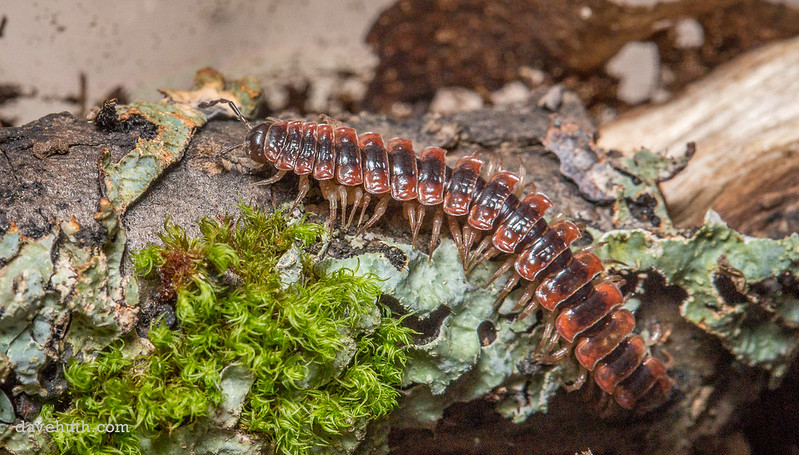
This is a small flat-backed millipede, the largest I've seen is about 1.5 inches. A related species in the genus, the more common Pseudopolydesmus serratus, is a tad larger but is more evenly brown in color – lacking the high contrast brick red paranota against jet black dorsum.
I've kept a small enclosure of P. canadensis since the first week of April 2018. I keep them on about 2 inches of woody substrate (~70% decaying hardwood, 20% shredded up oak leaves, and 10% coco fiber to hold moisture). The surface is scattered with chunks of wood, sticks, bark, lichen, and moss.
I started with 2 adults, a male and a female, which began mating within a day of collecting them. I've continued to add adults to the enclosure as I find them. From April to June, I collected and added about 12 adults in total.

Although I kept a dozen in the enclosure through the spring and early summer, there was rarely more than 5 or 6 alive at a time as the die-off rate of the adults was frequent. My perception is that after mating for several days or weeks, the female would burrow into the substrate and the male would die. The details were hard to keep track of, because I was so frequently collecting more and adding them to the group, so I'm not exactly sure how long each was living and who was mating with whom.
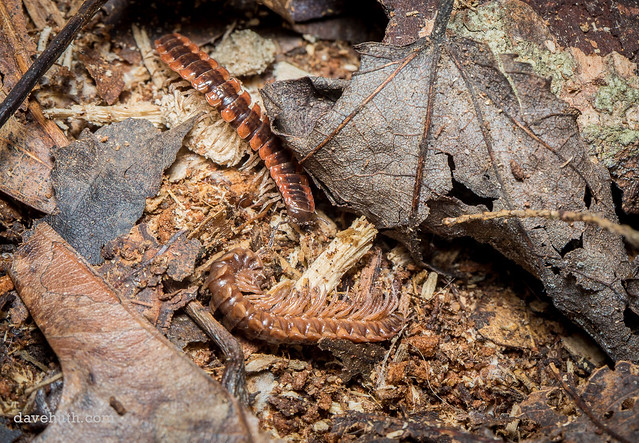
Their diet was almost exclusively wood and leaves. I offered many supplemental foods, the vast majority of which were never touched. The only supplemental food that seemed to get any attention was the inside of banana peels, which I tossed in on a whim. They would work over the inside of a peel for several days until it became completely brown and slimy.


I discovered an egg capsule by accident the first week of May 2018. I was observing the enclosure by lifting bark and moving bits of substrate around and I broke open the capsule without even seeing it, exposing many dozens of eggs.
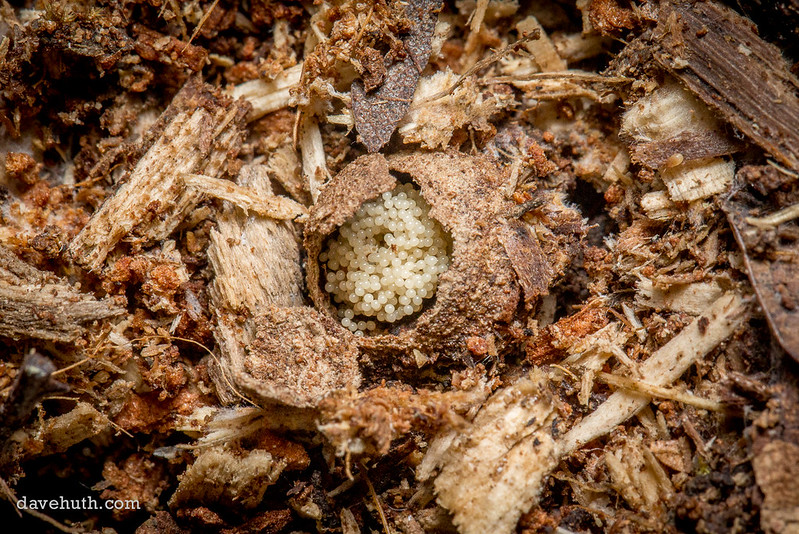
I covered the opening of the capsule with a section of leaf, which I kept lightly moist by misting whenever it dried. After a couple of weeks, I noticed that the eggs no longer appeared evenly spherical. Instead they were unevenly globular, and I believe these are the protonymphs, some still in the egg casing and some exiting.
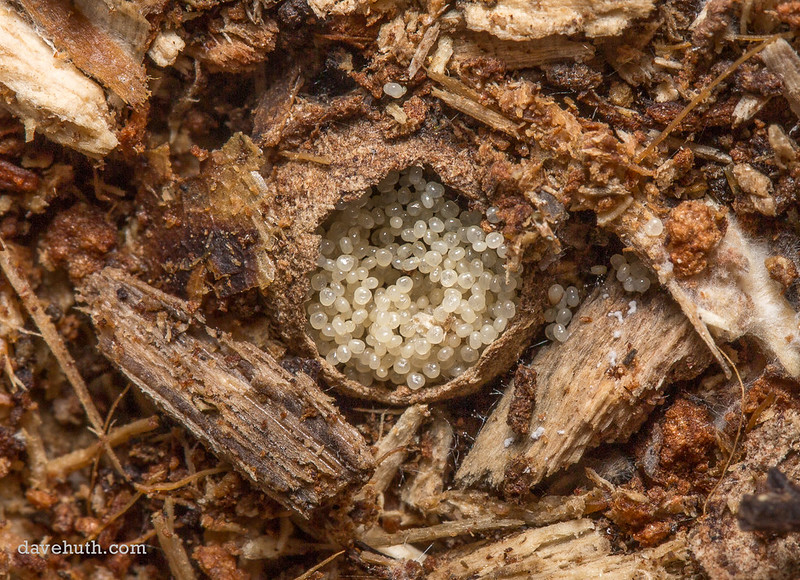
A few days later, the egg casings were clearly empty. The 1st instar pedelings had all moved together in a mass to the side of the enclosure, jus below the surface against the clear plastic where they could be seen.
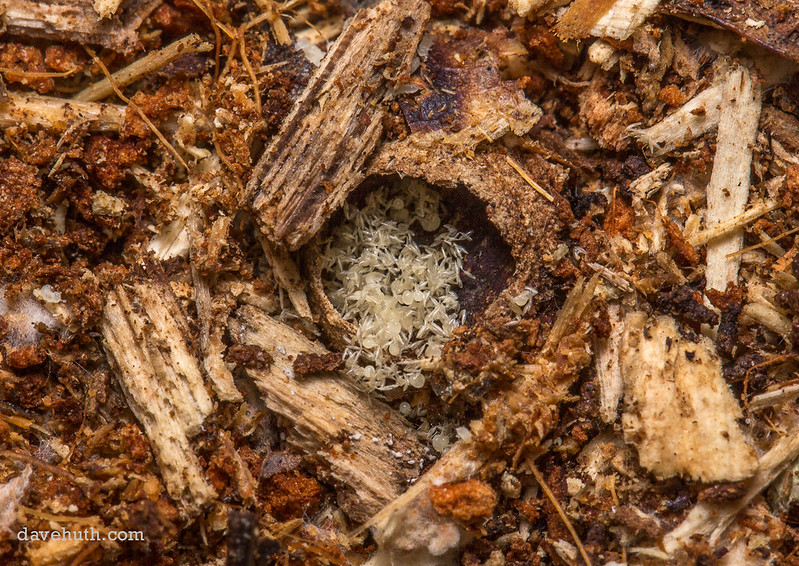
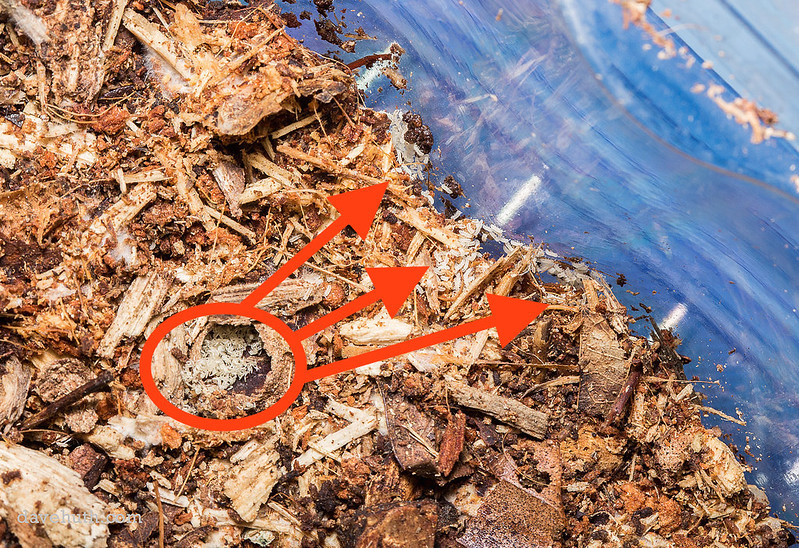

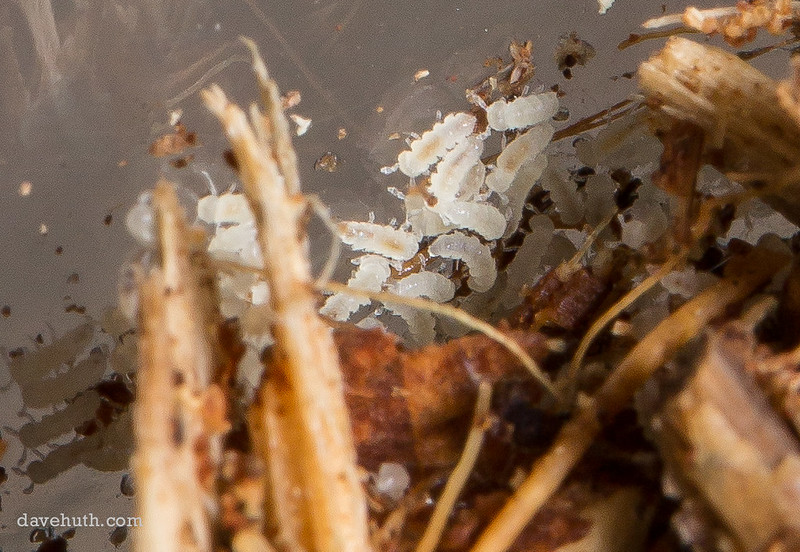
The pedelings did not evenly disburse across the surface or through the substrate. I saw them only all together in a large group. Over the next week to 10 days, they traveled back and forth from one side of the enclosure to another. Sometimes under cover, sometimes against the plastic sides. They always stayed in a small "herd" together.
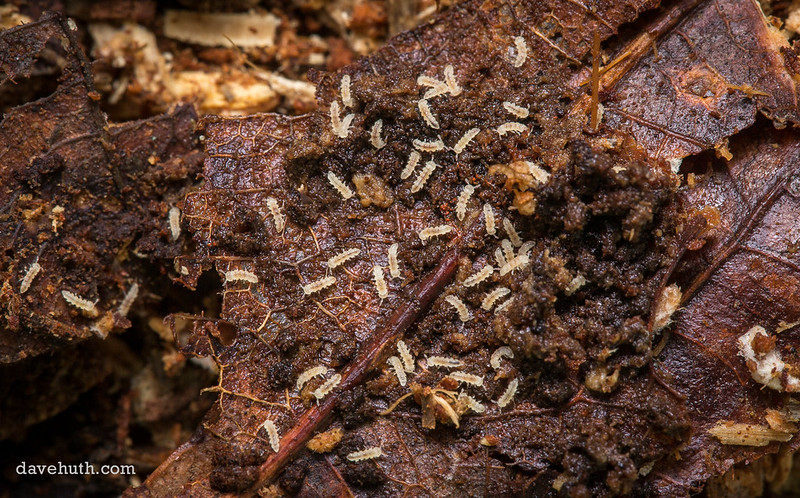
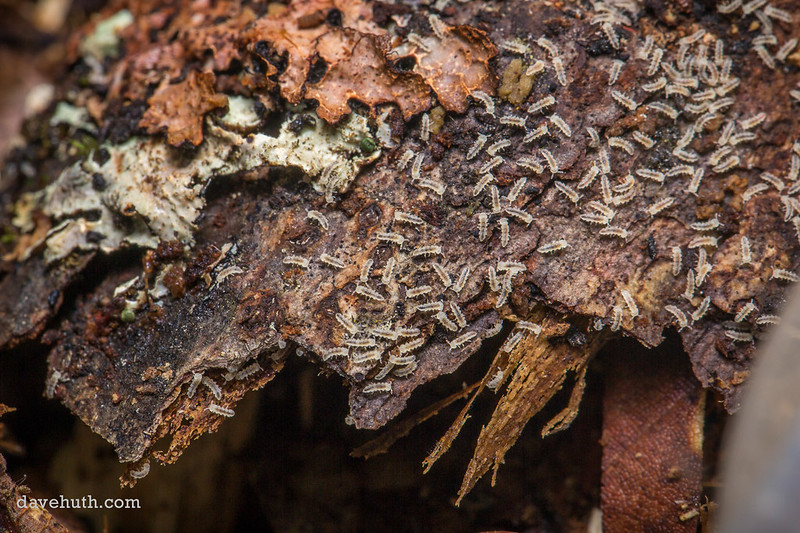
Then they disappeared. I presumed they were buried, maybe all molting together? I wasn't sure. Unfortunately, I was away for the next 4 weeks and wasn't able to make extensive observations. I looked in about once or twice a week, and never saw any more pedelings until this past week, the end of July 2018.
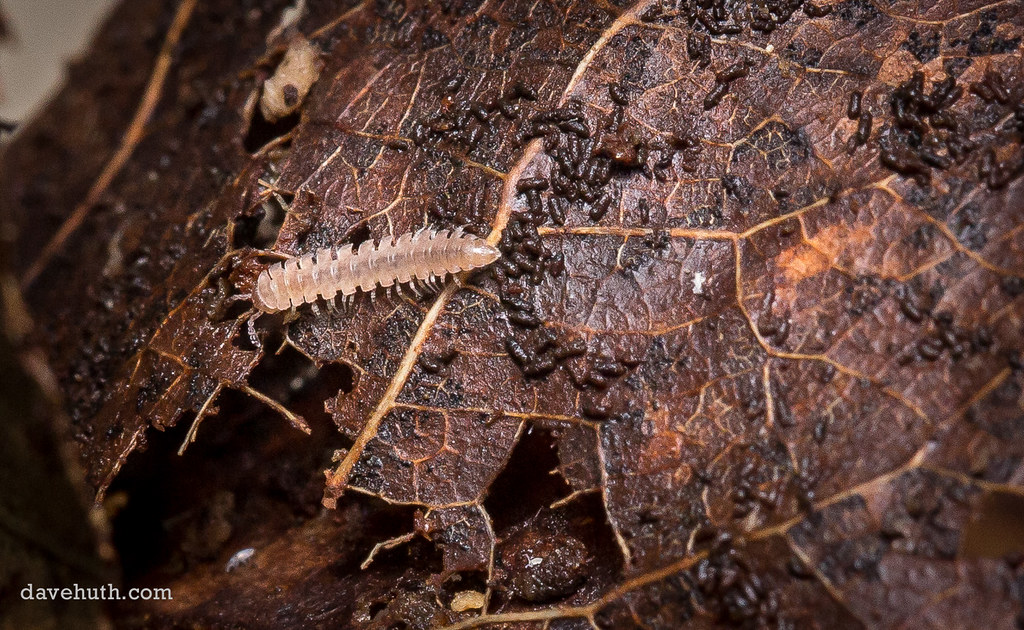
Pedelings have indeed molted up to the recognizable Pseudopolydesmus shape with distinct paranota. However, I can see only several at a time, randomly disbursed on the surface, no longer moving together.
There are 2 or 3 remaining adults alive, and I'll be watching for more signs of more pedelings. I don't know if only a few have survived, or if they are all still buried. They're still quite small (<4 mm) so as they grow I should see more of them more frequently.
I'm very encouraged by my success at breeding so far. There may be other egg capsules in the enclosure, or possibly even another brood of pedelings (I'm not sure of what might have happened during the 4 weeks that i was away).
I'll keep updating here as I learn more about keeping this nice looking, very active and charming polydesmid millipede.
I'm really charmed by a common Polydesmid around my yard, Pseudopolydesmus canadensis.

This is a small flat-backed millipede, the largest I've seen is about 1.5 inches. A related species in the genus, the more common Pseudopolydesmus serratus, is a tad larger but is more evenly brown in color – lacking the high contrast brick red paranota against jet black dorsum.
I've kept a small enclosure of P. canadensis since the first week of April 2018. I keep them on about 2 inches of woody substrate (~70% decaying hardwood, 20% shredded up oak leaves, and 10% coco fiber to hold moisture). The surface is scattered with chunks of wood, sticks, bark, lichen, and moss.
I started with 2 adults, a male and a female, which began mating within a day of collecting them. I've continued to add adults to the enclosure as I find them. From April to June, I collected and added about 12 adults in total.

Although I kept a dozen in the enclosure through the spring and early summer, there was rarely more than 5 or 6 alive at a time as the die-off rate of the adults was frequent. My perception is that after mating for several days or weeks, the female would burrow into the substrate and the male would die. The details were hard to keep track of, because I was so frequently collecting more and adding them to the group, so I'm not exactly sure how long each was living and who was mating with whom.

Their diet was almost exclusively wood and leaves. I offered many supplemental foods, the vast majority of which were never touched. The only supplemental food that seemed to get any attention was the inside of banana peels, which I tossed in on a whim. They would work over the inside of a peel for several days until it became completely brown and slimy.


I discovered an egg capsule by accident the first week of May 2018. I was observing the enclosure by lifting bark and moving bits of substrate around and I broke open the capsule without even seeing it, exposing many dozens of eggs.

I covered the opening of the capsule with a section of leaf, which I kept lightly moist by misting whenever it dried. After a couple of weeks, I noticed that the eggs no longer appeared evenly spherical. Instead they were unevenly globular, and I believe these are the protonymphs, some still in the egg casing and some exiting.

A few days later, the egg casings were clearly empty. The 1st instar pedelings had all moved together in a mass to the side of the enclosure, jus below the surface against the clear plastic where they could be seen.




The pedelings did not evenly disburse across the surface or through the substrate. I saw them only all together in a large group. Over the next week to 10 days, they traveled back and forth from one side of the enclosure to another. Sometimes under cover, sometimes against the plastic sides. They always stayed in a small "herd" together.


Then they disappeared. I presumed they were buried, maybe all molting together? I wasn't sure. Unfortunately, I was away for the next 4 weeks and wasn't able to make extensive observations. I looked in about once or twice a week, and never saw any more pedelings until this past week, the end of July 2018.

Pedelings have indeed molted up to the recognizable Pseudopolydesmus shape with distinct paranota. However, I can see only several at a time, randomly disbursed on the surface, no longer moving together.
There are 2 or 3 remaining adults alive, and I'll be watching for more signs of more pedelings. I don't know if only a few have survived, or if they are all still buried. They're still quite small (<4 mm) so as they grow I should see more of them more frequently.
I'm very encouraged by my success at breeding so far. There may be other egg capsules in the enclosure, or possibly even another brood of pedelings (I'm not sure of what might have happened during the 4 weeks that i was away).
I'll keep updating here as I learn more about keeping this nice looking, very active and charming polydesmid millipede.
